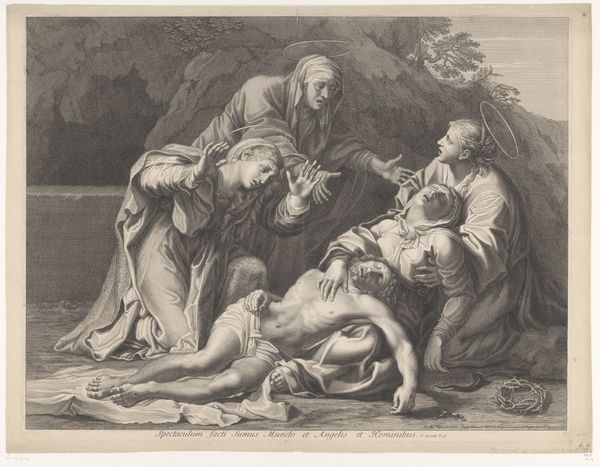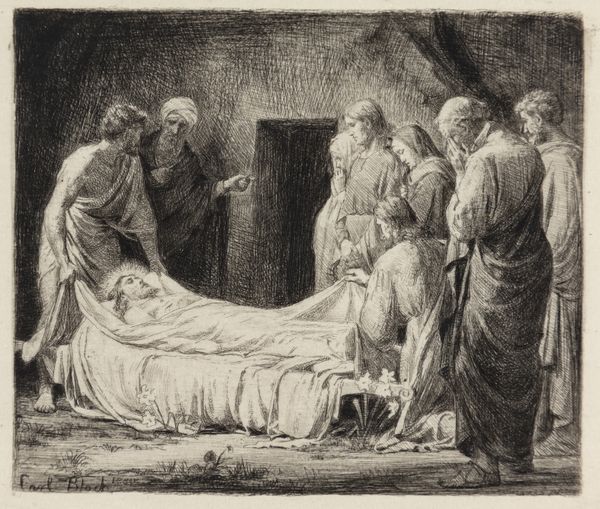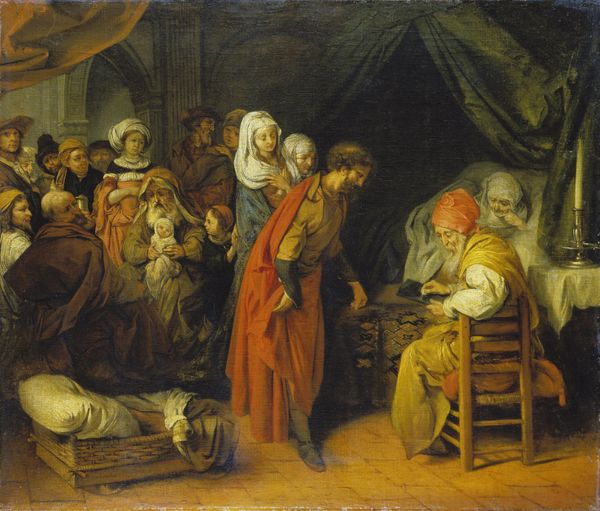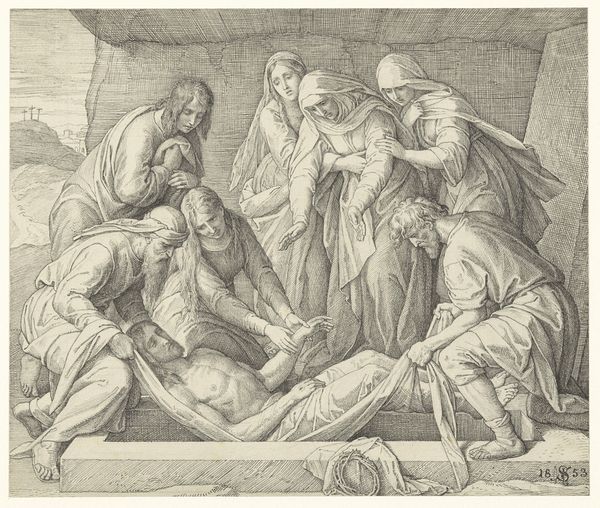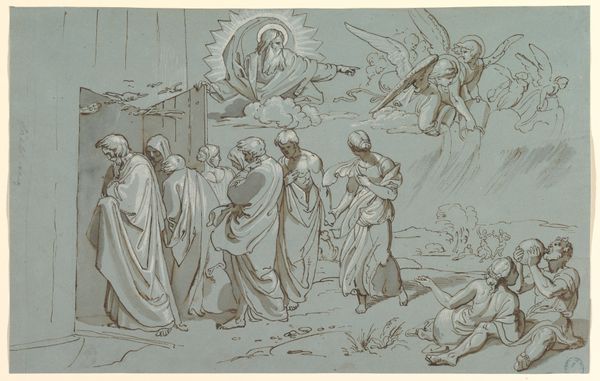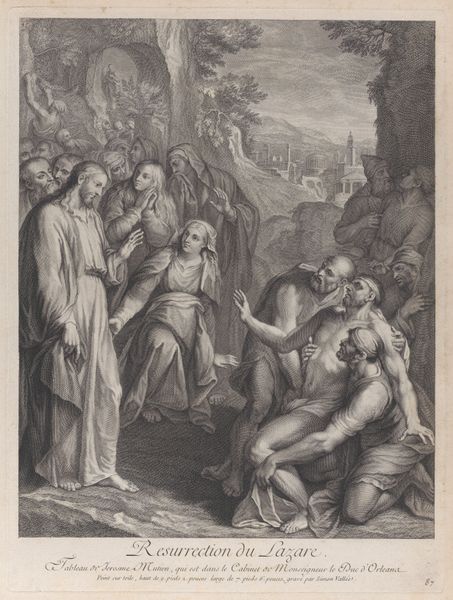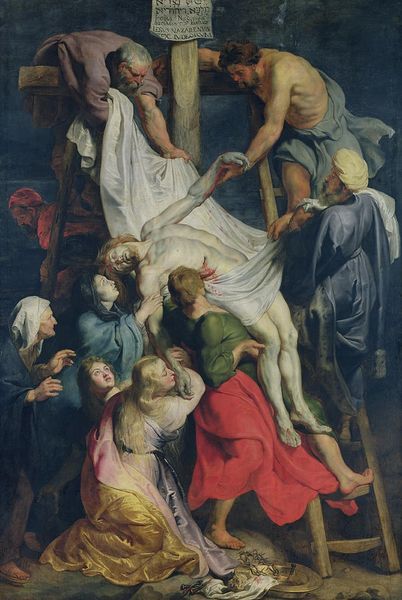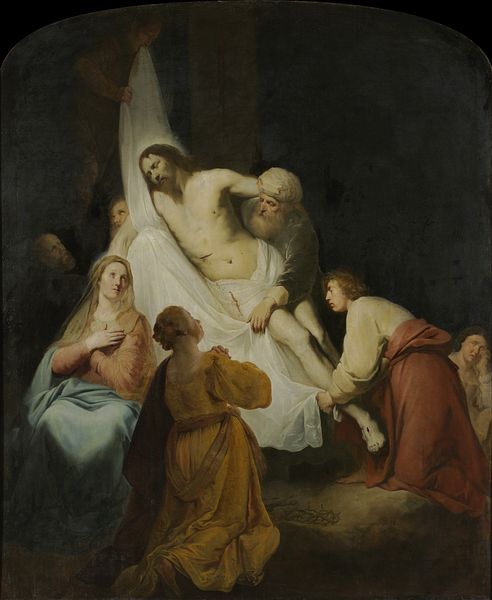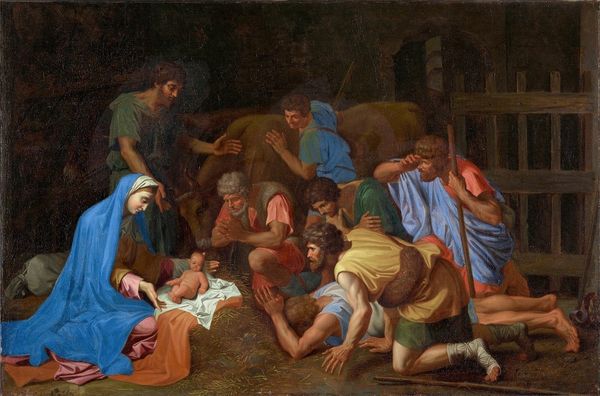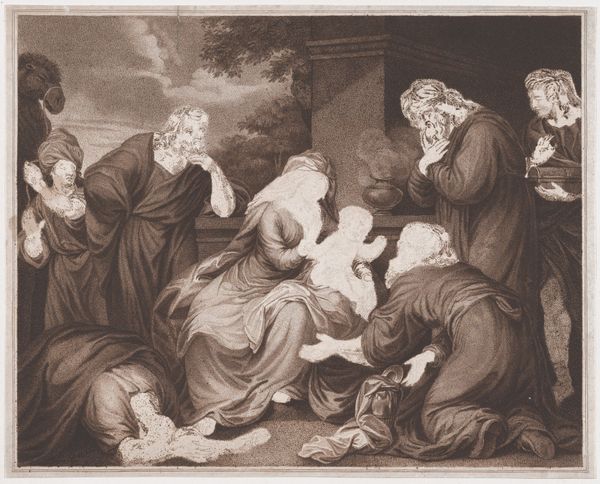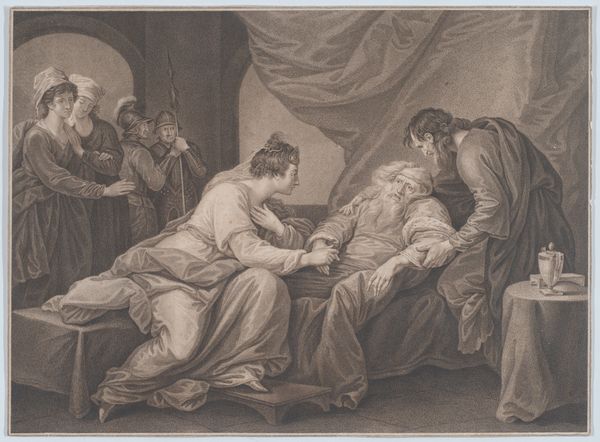
drawing, watercolor, ink, indian-ink
#
drawing
#
narrative-art
#
figuration
#
watercolor
#
ink
#
indian-ink
#
15_18th-century
#
history-painting
Copyright: Public Domain
Editor: Here we have Willem Joseph Laquy's "Entombment of Christ," made sometime in the 1700s. It's a drawing created with ink and watercolor. It strikes me as quite somber, especially with the muted colors and the way everyone is huddled around Christ’s body. What’s your take on this piece? Curator: This drawing gives us a glimpse into the intersection of religious narrative and social consciousness in 18th-century art. Consider how the figures surrounding Christ, often depicted as archetypes of grief, can also be viewed as stand-ins for marginalized communities. Laquy invites us to consider themes of injustice, sacrifice, and the very human response to loss. Editor: So, it's not just about a biblical scene? Curator: Not just. It reflects a specific social environment and functions to ignite viewers' awareness and compassion for all those who suffer. The artist employs religious iconography to speak on universal social conditions, inviting you to find parallels to contemporary struggles and the collective need for empathy. How does that perspective resonate with you? Editor: That makes me see the image in a totally new way, connecting historical narratives to today's world. The crown of thorns on the lower left isn't just symbolic, it speaks volumes. Curator: Absolutely. Think about power dynamics reflected in this seemingly quiet scene and the political weight inherent in narratives of oppression and redemption. By situating Christ's entombment in a broader context of human suffering, Laquy challenges us to think critically about the structures that perpetuate injustice and the importance of standing in solidarity with those who are most vulnerable. Editor: I had no idea one image could hold so many layers. I'm leaving with a deeper appreciation and understanding. Curator: That’s the power of art—to illuminate our shared humanity and spark dialogues that transcend time.
Comments
No comments
Be the first to comment and join the conversation on the ultimate creative platform.
